Study on Social Integration Identification and Characteristics of Migrants from “Yangtze River to Huaihe River” Project: A Time-Driven Perspective
Abstract
1. Introduction
2. Materials and Methods
2.1. Study Area
2.2. Data Collection
2.3. Methods
2.3.1. Grounded Theory
2.3.2. Structure Equation Modeling
2.3.3. Cox Proportional Hazards Model
2.3.4. Research Procedures
Social Integration Identification
Analysis of Social Integration Characteristics in Different Time Dimensions
3. Results
3.1. Social Integration Analysis Framework and Theory Model
3.2. Comprehensive Score of Social Integration
3.3. Social Integration Identification
3.4. The Characteristics of Social Integration in Different Time Dimensions
3.4.1. Age
3.4.2. Gender
3.4.3. Location
3.4.4. Political Identity
3.4.5. Educational Background
4. Discussion
4.1. Influence of Age on Integration Speed in Different Time Dimensions
4.2. Influence of Gender on Integration Speed in Maintenance Time and Working Time
4.3. Influence of Location on Integration Speed in Working Time and Leisure Time
4.4. Influence of Political Identity on Integration Speed in Maintenance Time and Working Time
4.5. Influence of Educational Background on Integration Speed in Working Time
4.6. Policy Implication
4.6.1. Work Activities
4.6.2. Maintenance Activities
4.6.3. Leisure Activities
5. Conclusions
- (1)
- Political factors, cultural factors and life factors have a greater impact on migrants’ social integration. Economic factors and security factors however, have relatively little impact on migrants’ social integration.
- (2)
- Migrants over the age of 45 have a serious lag in integrating into society in all aspects of activities.
- (3)
- Female migrants integrate into society faster than male migrants in maintenance activities and slower in work activities.
- (4)
- Rural migrants integrate into society faster than urban migrants in work activities and slower in leisure activities.
- (5)
- CPC migrants integrate into society faster than nonparty members in work activities and maintenance activities.
- (6)
- The higher the level of education, the faster migrants can integrate into society at work.
Author Contributions
Funding
Conflicts of Interest
Appendix A
| Q1: How often do you participate in political activities? 1- never 2- 1 to 3 times a year 3- 4 to 8 times a year 4- 9 to 13 times a year 5- more than 14 times a year |
| Q2: Is there a high degree of discrimination in employment? 1- very low 2- low 3- general 4-high 5- very high |
| Q3: How much do you know about local social obligations? 1- little 2- a little 3- general 4- many 5- a great many |
| Q4: Are you satisfied with the compensation? 1- very dissatisfied 2- dissatisfied 3- general 4- satisfied 5-very satisfied |
| Q5: How much is your family income per year? Actual value |
| Q6: Is your source of income stable? 1- unstable 2- relatively unstable 3- general 4- relatively stable 5- stable |
| Q7: What is the proportion of your food expenditure to total consumption expenditure? Actual value |
| Q8: How much is your family savings? Actual value |
| Q9: Are you satisfied with the local spiritual and cultural life? 1- very dissatisfied 2- dissatisfied 3- general 4- satisfied 5-very satisfied |
| Q10: Is your customs changed a lot? 1- little 2- a little 3- general 4- many 5-a great many |
| Q11: How much do you know about local codes of conduct? 1- little 2- a little 3- general 4- many 5-a great many |
| Q12: How often do you interact with locals? 1- never 2- 1 to 7 times a week 3- 8 to 14 times a week 4- 16 to 21 times a week 5- more than 22 times a week |
| Q13: Are you satisfied with the living environment in the resettlement area? 1- very dissatisfied 2- dissatisfied 3- general 4- satisfied 5-very satisfied |
| Q14: How often do you participate in community or village activities? 1- never 2- 1 to 3 times a year 3- 4 to 8 times a year 4- 9 to 13 times a year 5- more than 14 times a year |
| Q15: How much medical insurance do you pay? Actual value |
| Q16: How much endowment insurance do you pay? Actual value |
| Q17: Are you satisfied with the skills training organized by the government? 1- very dissatisfied 2- dissatisfied 3- general 4- satisfied 5-very satisfied |
References
- Chen, A.J.; Shi, G.Q. A social integration study of involuntary migration. Chin. Sociol. Anthropol. 2006, 38, 5–18. [Google Scholar]
- Cernea, M.M.; Mcdowell, C. Risks and Reconstruction: Experiences of, Resettlers and Refugees; The World Bank: Washington, DC, USA, 2000. [Google Scholar]
- Cernea, M.M. Involuntary Resettlement in Development Projects: Policy Guidelines in World Bank-Financed Projects; The World Bank: Washington, DC, USA, 1988. [Google Scholar]
- Wu, S.; Shi, G.Q. Institutional logic, practical predicament and coping strategy for reservoir migrants sharing benefits of hydropower projects. J. Hohai Univ. (Philos. Soc. Sci.) 2008, 20, 45–51. [Google Scholar]
- Yu, Q.N. Measures and obstacles of benefit-sharing for resettlement of hydropower projects. J. Econ. Water Resour. 2014, 32, 69–72+76. [Google Scholar]
- Zhang, C.M.; Shi, G.Q. Discussion on the support scope of reservoir resettlement. Jiangxi Soc. Sci. 2007. Available online: http://www.cnki.com.cn/Article/CJFDTOTAL-JXSH200709048.htm (accessed on 21 December 2019).
- Shi, G.Q.; Gu, A.Q. Social Stratification of Involuntary Resettlement: An Analytical Framework. Nanjing J. Soc. Sci. 2018, 8, 80–89. [Google Scholar]
- Peng, H.; Yang, X.L. Analysis about the Ways to Improve the Ability of Rural Governance in Poor Villages under the Background of Precision Poverty Alleviation. Econ. Res. Guide 2018, 14, 15–17+20. [Google Scholar]
- Hu, Y.Y.; Li, Q. Analysis on poverty alleviation of reservoir immigrants from the perspective of the targeted poverty alleviation. Innov. Sci. Technol. 2017, 465–468. Available online: http://www.cnki.com.cn/Article/CJFDTOTAL-CXKJ201704019.htm (accessed on 21 December 2019).
- Yongju, L.; Luo, W. The Basic Situation and Policy Suggestions of the Return Migration in Chongqing of the Three Gorges Project. Econ. Res. Guide 2018, 28, 117–121. [Google Scholar]
- Parsons, T.; Smelser, N. Economy and Society: A Study in the Integration of Economic and Social Theory; Routledge: Abingdon, UK, 2005. [Google Scholar]
- Huang, K.S.; Ga, R.D. A Tentative Research on social Inclusion index of Migrant. West Forum 2010, 20, 27–36. [Google Scholar]
- Wang, Y.F.; Liu, Z.; Liu, Z.S. Research on the Evaluation of the Level of Economic Integration of Floating Population in China Based on the Three Stage Grey Clustering Method. Popul. Econ. 2019, 6, 42–56. [Google Scholar]
- Entzinger, H.H.B.; Biezeveld, R.L. Benchmarking in Immigrant Integration; European Commission: Rotterdam, The Netherlands, 2003. [Google Scholar]
- Syed, M.; McLean, K.C. Understanding identity integration: Theoretical, methodological, and applied issues. J. Adolesc. 2016, 47, 109–118. [Google Scholar] [CrossRef]
- Glazer, N.; Moynihan, D.P. Beyond the Melting Pot: The Negroes, Puerto Ricans, Jews, Italians, and Irish of New York City; MIT Press: Cambridge, MA, USA, 1970. [Google Scholar]
- Hu, D.W. Legal System perfection and institutional amelioration on the long-term compensation for reservoir resettlement. China Land Sci. 2015, 29, 86–91+96. [Google Scholar]
- Li, D.; Wu, H.Y. Fund system: A new way of long-term compensation and resettlement for reservoir migration. Rural Econ. 2007, 11, 71–73. [Google Scholar]
- Liao, W. Research on cultural conflict and protection of reservoir migration in China. Rural Econ. 2005, 2, 86–88. [Google Scholar]
- Wang, M.F.; Huang, Q.; Ding, L.X. Impact of regional cultural differences on resettlement of remote reservoirs. Popul. Econ. 1999, 2, 43–47. [Google Scholar]
- Martínez-Ros, E.; Kunapatarawong, R. Green innovation and knowledge: The role of size. Bus. Strategy Environ. 2019, 28, 1045–1059. [Google Scholar] [CrossRef]
- Aldieri, L.; Kotsemir, M.; Vinci, C.P. The role of environmental innovation through the technological proximity in the implementation of the sustainable development. Bus. Strategy Environ. 2019. [Google Scholar] [CrossRef]
- Conker, A. The power struggle in the layer of transnational hydropolitics: The case of the Ilisu dam project. Eurasian J. Soc. Sci. 2016, 4, 14–34. [Google Scholar] [CrossRef]
- Conker, A.; Hussein, H. Hydraulic mission at home, hydraulic mission abroad? Examining Turkey’s regional ‘Pax-Aquarum’ and its limits. Sustainability 2019, 11, 228. [Google Scholar] [CrossRef]
- Shangguan, Z.H.; Shi, G.Q.; Wu, R.; Song, L.L. Analysis on the Factors Influencing the Livelihood Vulnerability of “Yangtze River to Huaihe River”. Statistics Information Forum 2019, 34, 94–100. [Google Scholar]
- Yang, J.L.; Wang, G.H. Structural difference of social integration of land-lost farmers in urban areas and its influencing factors—based on investigation and analysis of Shandong province. Issues Agric. Econ. 2017, 38, 30–42. [Google Scholar]
- Chen, H.; Chen, X.C.; Xie, Y. Occupational differentiation and influencing factors of land-lost farmers during urbanization. China Popul. Resour. Environ. 2013, 23, 72–79. [Google Scholar]
- Feng, X.P.; Jiang, L.H. Research on the risk of landless farmers under the stratification. Acad. J. Zhongzhou 2011, 5, 78–81. [Google Scholar]
- Burchardt, T.; Grand, J.L.; Piachaud, D. Social exclusion in Britain 1991—1995. Soc. Policy Adm. 1999, 33, 18. [Google Scholar] [CrossRef]
- Yu, H.; Shaw, S.-L. Exploring potential human activities in physical and virtual spaces: A spatio-temporal GIS approach. Int. J. Geogr. Inf. Sci. 2008, 22, 409–430. [Google Scholar] [CrossRef]
- Neutens, T.; Versichele, M.; Schwanen, T. Arranging place and time: A GIS toolkit to assess person-based accessibility of urban opportunities. Appl. Geogr. 2010, 30, 561–575. [Google Scholar] [CrossRef]
- Cumming, S. Lone Mothers Exiting Social Assistance: Gender, Social Exclusion and Social Capital. Ph.D. Thesis, University of Waterloo, Waterloo, ON, Canada, 2014. [Google Scholar]
- Hao, X.H.; Zhou, S.H.; Peng, Y.N.; Wen, P. Spatial-temporal exclusion characteristics and influencing mechanism of low-income residents’ outdoor activity in Guangzhou. Hum. Geogr. 2018, 33, 102–108+116. [Google Scholar]
- Wang, L.C.; Xue, C.X. Spatio-temporal characteristics and influencing factors of urban floating population in China from 2011 to 2015. Chin. J. Popul. Resour. Environ. 2019, 17, 359–373. [Google Scholar] [CrossRef]
- Windzio, M. Immigrant children and their parents: Is there an intergenerational interdependence of integration into social networks? Soc. Netw. 2015, 40, 197–206. [Google Scholar] [CrossRef]
- Lu, X.; Pas, E.I. Socio-demographics, activity participation and travel behavior. Transp. Res. Part A Policy Pract. 1999, 33, 1–18. [Google Scholar] [CrossRef]
- Martin, P.Y. Grounded theory and organizational research. J. Appl. Behav. Sci. 1986, 22, 141–157. [Google Scholar] [CrossRef]
- Strauss, A.; Corbin, J. Grounded theory methodology: An overview. Handbook Qual. Res. 1994, 17, 273–285. [Google Scholar]
- Faggiolani, C. Qualitative Approach and Grounded Theory for Assessing User Evaluation of Library Services: City Library Network of Perugia—A Case Study. In Qualitative & Quantitative Methods in Libraries-Theory & Application; World Scientific: Singapore, 2010. [Google Scholar] [CrossRef]
- Bollen, K.A. Structural equation models. Encycl. Biostat. 2005. [Google Scholar] [CrossRef]
- Cox, D. Regression models and life tables. J. Roy. Stat. Soc. B 1972, 34, 187–202. [Google Scholar] [CrossRef]
- Reid, N. A Conversation with Sir David Cox. Stat. Sci. 1994, 9, 439–455. [Google Scholar] [CrossRef]
- Yang, L.; Suning, X. From control to participation: Transformation of the design modes of modern urban space. Archit. J. 2017, 8, 21–27. [Google Scholar]
- Goodman, S.W. Integration requirements for integration’s sake? Identifying, categorising and comparing civic integration policies. J. Ethn. Migr. Stud. 2010, 36, 753–772. [Google Scholar] [CrossRef]
- Hum, D.; Simpson, W. Economic integration of immigrants to Canada: A short survey. Can. J. Urban Res. 2004, 13, 46–61. [Google Scholar]
- Li, Z.G.; Zhang, J.X. Mediating socio-spatial differentiation: Urban planning responses to social disadvantage—With reference to UFP report, Sydney. Urban Plan. Int. 2004, 19, 32–35. [Google Scholar]
- Yuan, R.; Nan, Q. Social integration for migrants: Process, measurement and determinants. Popul. Res. 2010, 34, 11–20. [Google Scholar]
- Yang, J.H. Index of assimilation for rural-to-urban migrants: A further analysis of the conceptual framework of assimilation theory. Popul. Econ. 2010, 2, 64–70. [Google Scholar]
- Cai, Z.H.; Ming, L. Research on the planning of the revival of historic blocks from the perspective of inhabitant social integration: A case study of Daowai district in Harbin. China Anc. City 2018, 3, 83–90. [Google Scholar]
- Cronin, B. From balance to community: Transnational identity and political integration. Secur. Stud. 1998, 8, 270–301. [Google Scholar] [CrossRef]
- Fennema, M.; Tillie, J. Civic community, political participation and political trust of ethnic groups. In Multikulturelle demokratien im Vergleich; Verlag für Sozialwissenschaften: Wiesbaden, Germany, 2001; pp. 198–217. [Google Scholar]
- Shi, G.Q. Involuntary migration: Conflict and harmony. Jiangsu Soc. Sci. 2005, 5, 22–25. [Google Scholar]
- Chen, S.J.; Gao, W.W.; Zhou, K. Research on social security of reservoir migrants. J. Hohai Univ. (Philos. Soc. Sci.) 2001, 3, 20–23. [Google Scholar]
- Goffin, R.D.; MacLennan, R.N. Structural Equation Modeling: An Overview and Empirical Example for the Disinherited; Department of Psychology, The University of Western: London, ON, Canada, 1997; p. 746. [Google Scholar]
- Steiger, J.H. Structural Model Evaluation and Modification: An Interval Estimation Approach. Multivar. Behav. Res. 1990, 25, 173–180. [Google Scholar] [CrossRef] [PubMed]
- Uhlenberg, P. Integration of old and young. Gerontologist 2000, 40, 276–279. [Google Scholar] [CrossRef]
- Foner, A. Age integration or age conflict as society ages? Gerontologist 2000, 40, 272–276. [Google Scholar] [CrossRef][Green Version]
- Loscocco, K. Age integration as a solution to work–family conflict. Gerontologist 2000, 40, 292–301. [Google Scholar] [CrossRef][Green Version]
- Wang, C.L.; Wu, X.W. Tradition and change: Cultural and social integration of returning youth in small towns. China Youth Study 2019, 11, 22–28. [Google Scholar]
- Liu, Y.N.; Dong, Q.Y. Urban integration and homecoming adjustment of the new generation of migrant workers—based on the observation of the problem of choosing a spouse for migrant workers in Beijing. Theory Mon. 2019, 7, 139–146. [Google Scholar]
- Jin, X.Y.; Liu, Y.J. The social integration of migrant workers’ parents. J. Xi’an Jiaotong Univ. (Soc. Sci.) 2019, 39, 90–100. [Google Scholar]
- Zhang, C.E.; Fu, M. Study on rural women’s urban integration in immigrant community from gender perspective. Acad. J. Zhongzhou 2011, 5, 122–125. [Google Scholar]
- Wu, W.D. Gender differences in migrant workers’ social integration—evidence from five major cities. Lanzhou Acad. J. 2012, 6, 118–121. [Google Scholar]
- Yu, S. Research on social gender in urban integration. Stat. Decis. 2010, 16, 84–87. [Google Scholar]
- Yang, H.L. Research on rural modernization and cultural integration of China. J. South China Norm. Univ. (Soc. Sci. Ed.) 2019, 237, 23–25+191. [Google Scholar]
- Gong, Y.M.; Yao, L. Reservoir immigration culture and new rural culture construction—Based on the investigation of resettlement sites of Danjiangkou reservoir resettlement in the South-to-North Water diversion project. Contemp. Econ. 2012, 21, 6–9. [Google Scholar]
- Yang, J.H. Research on the Assimilation of the Floating Population in Chinese. Soc. Sci. China 2015, 2, 61–79. [Google Scholar]
- Chen, Y.; Wang, J. Social integration of new-generation migrants in Shanghai China. Habitat Int. 2015, 49, 419–425. [Google Scholar] [CrossRef]
- Ying, Y.W.; Lee, P.A.; Tsai, J.L.; Lee, Y.J.; Tsang, M. Network composition, social integration, and sense of coherence in Chinese American young adults. J. Hum. Behav. Soc. Environ. 2000, 3, 83–98. [Google Scholar] [CrossRef]
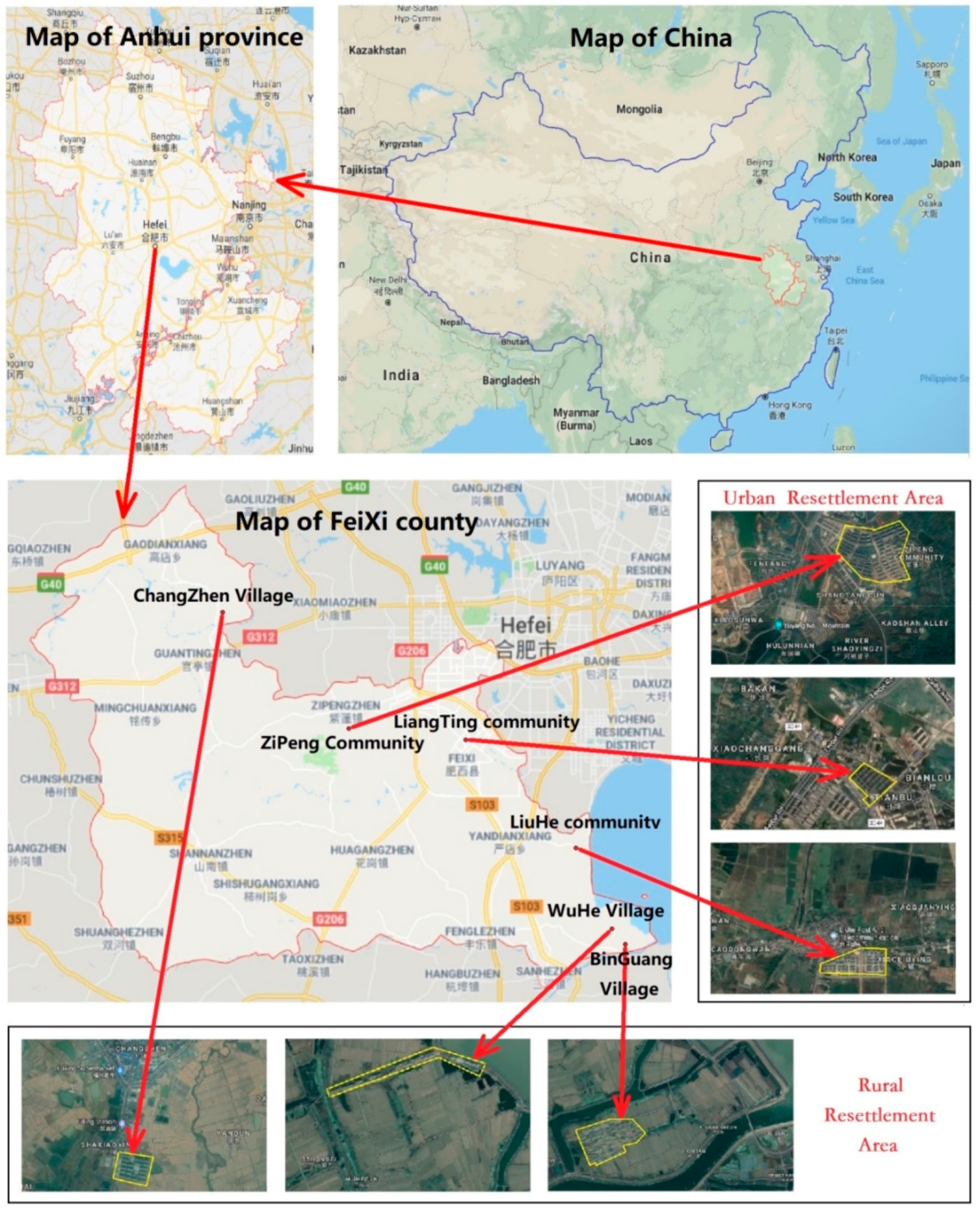
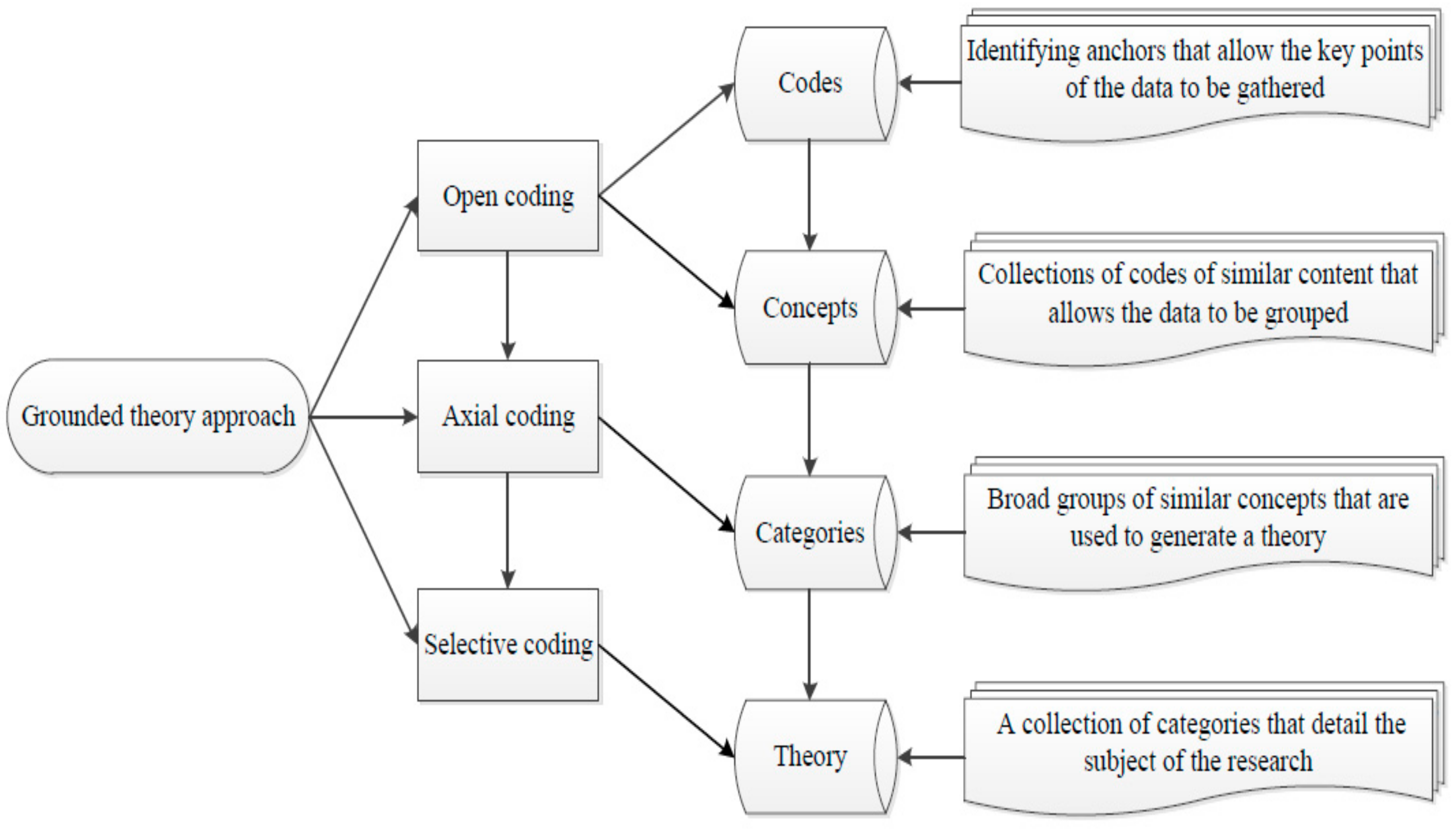
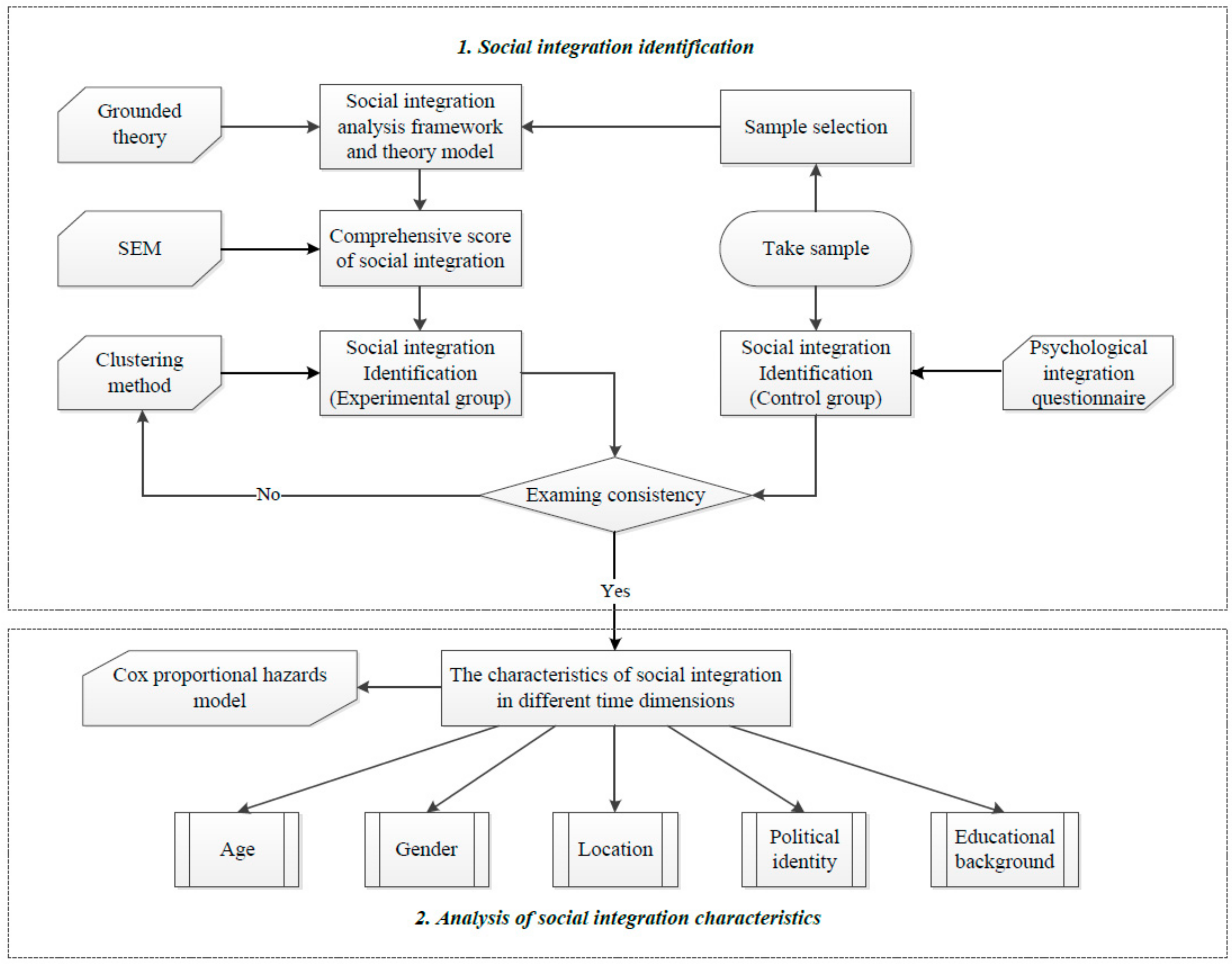
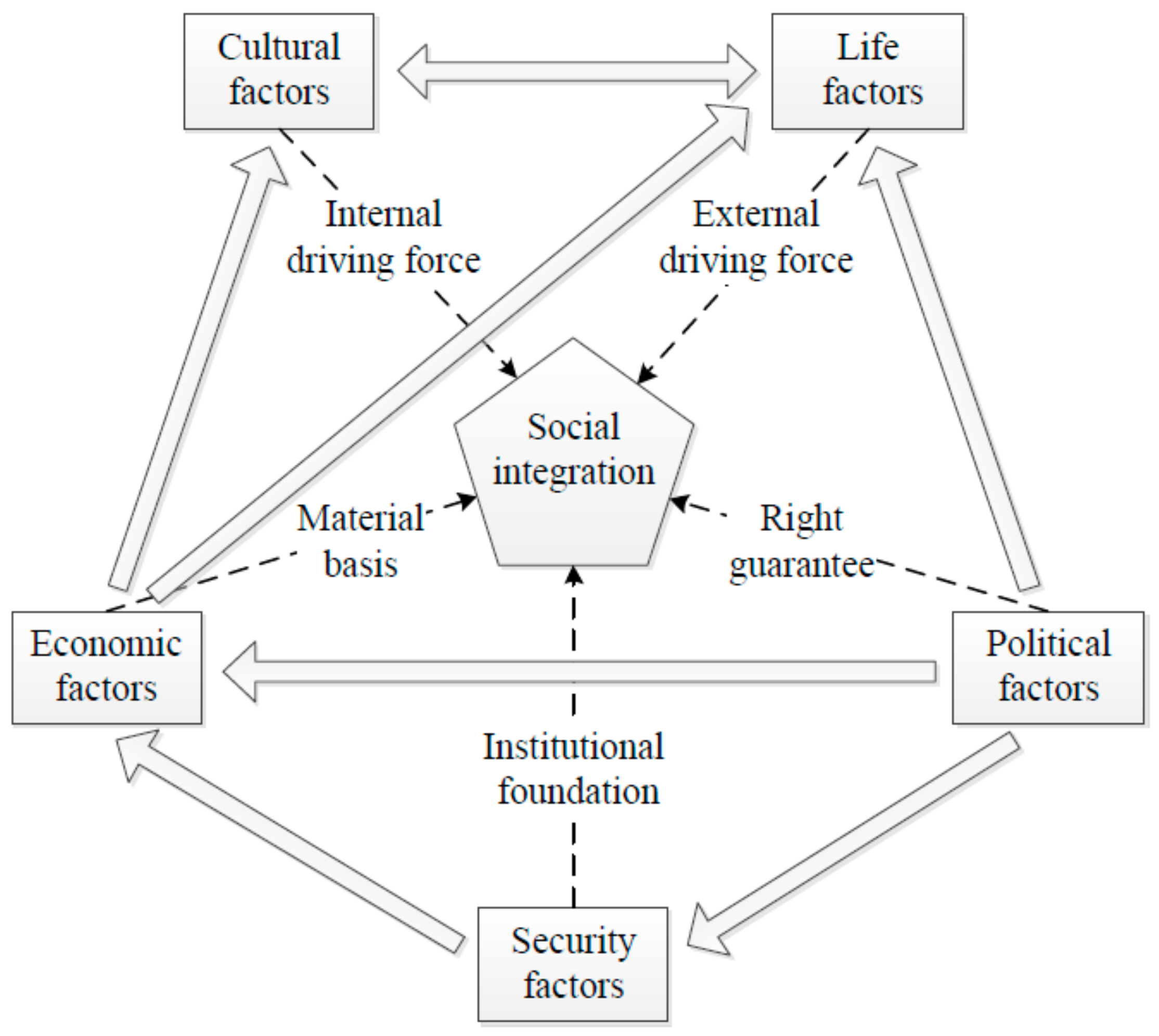
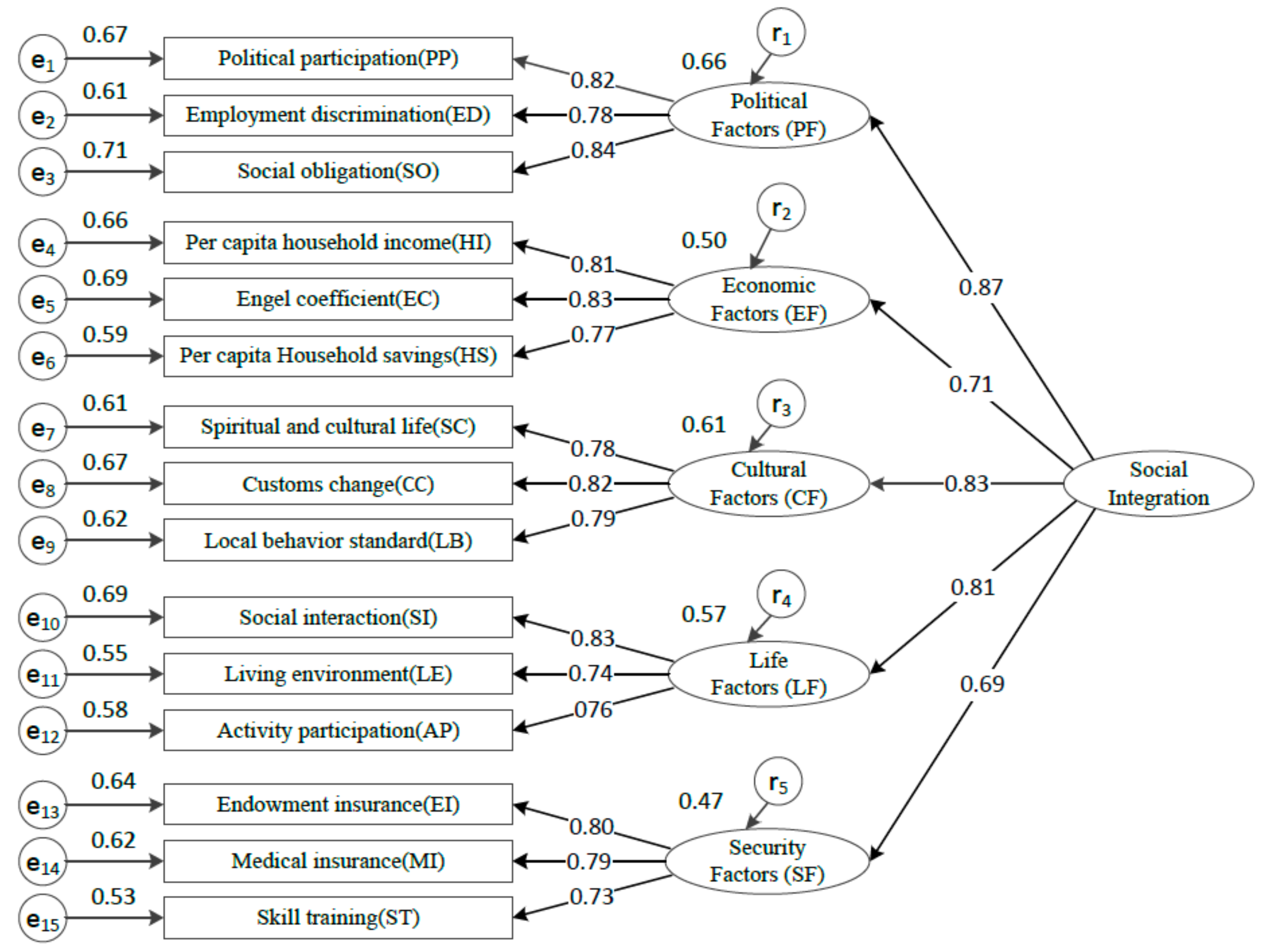
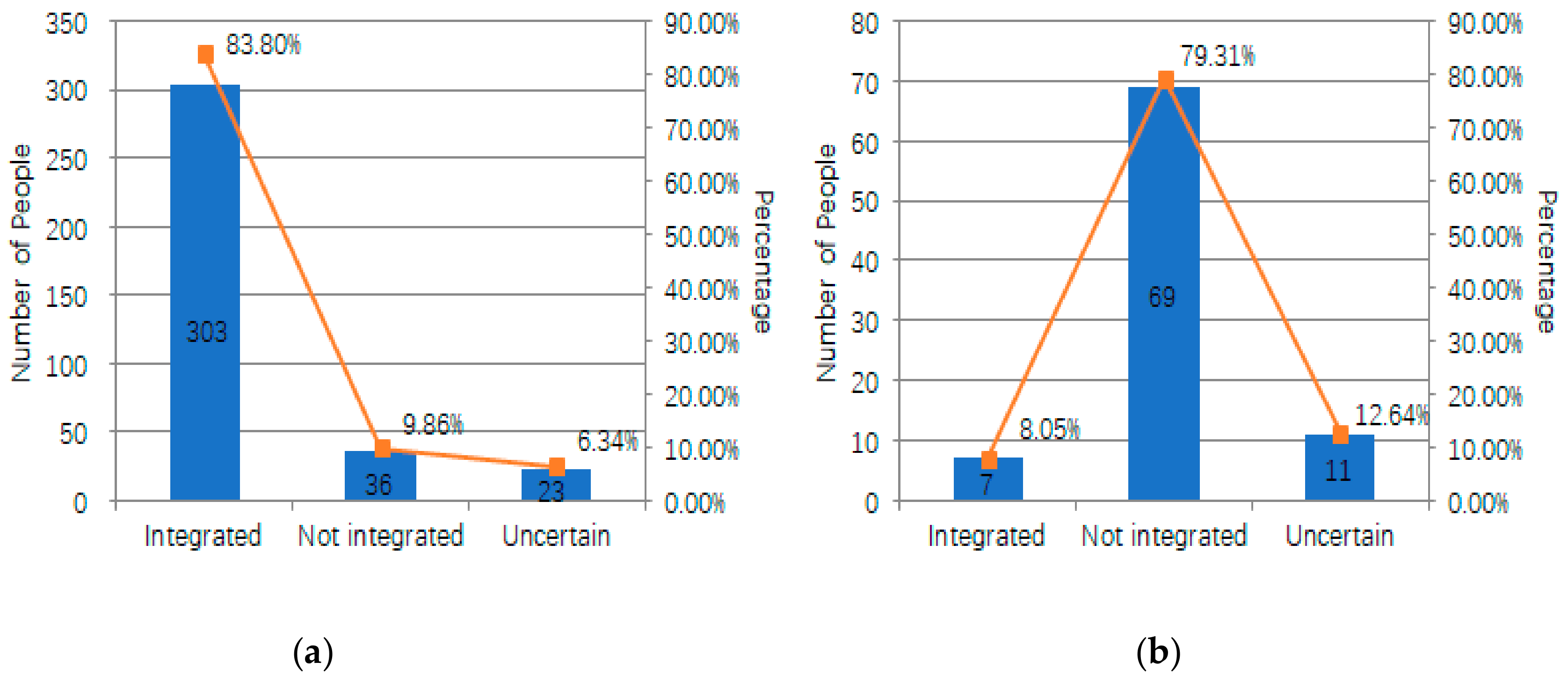
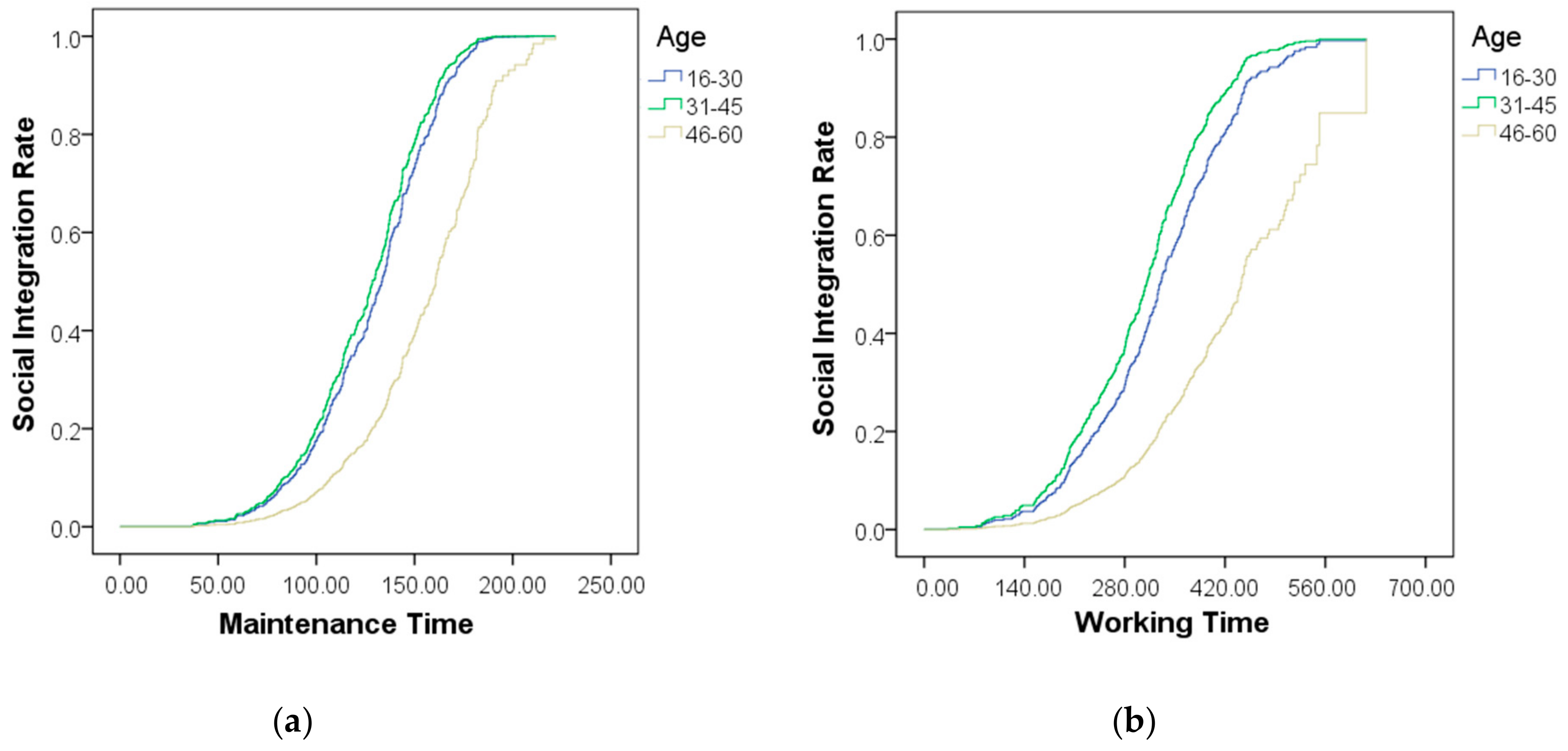
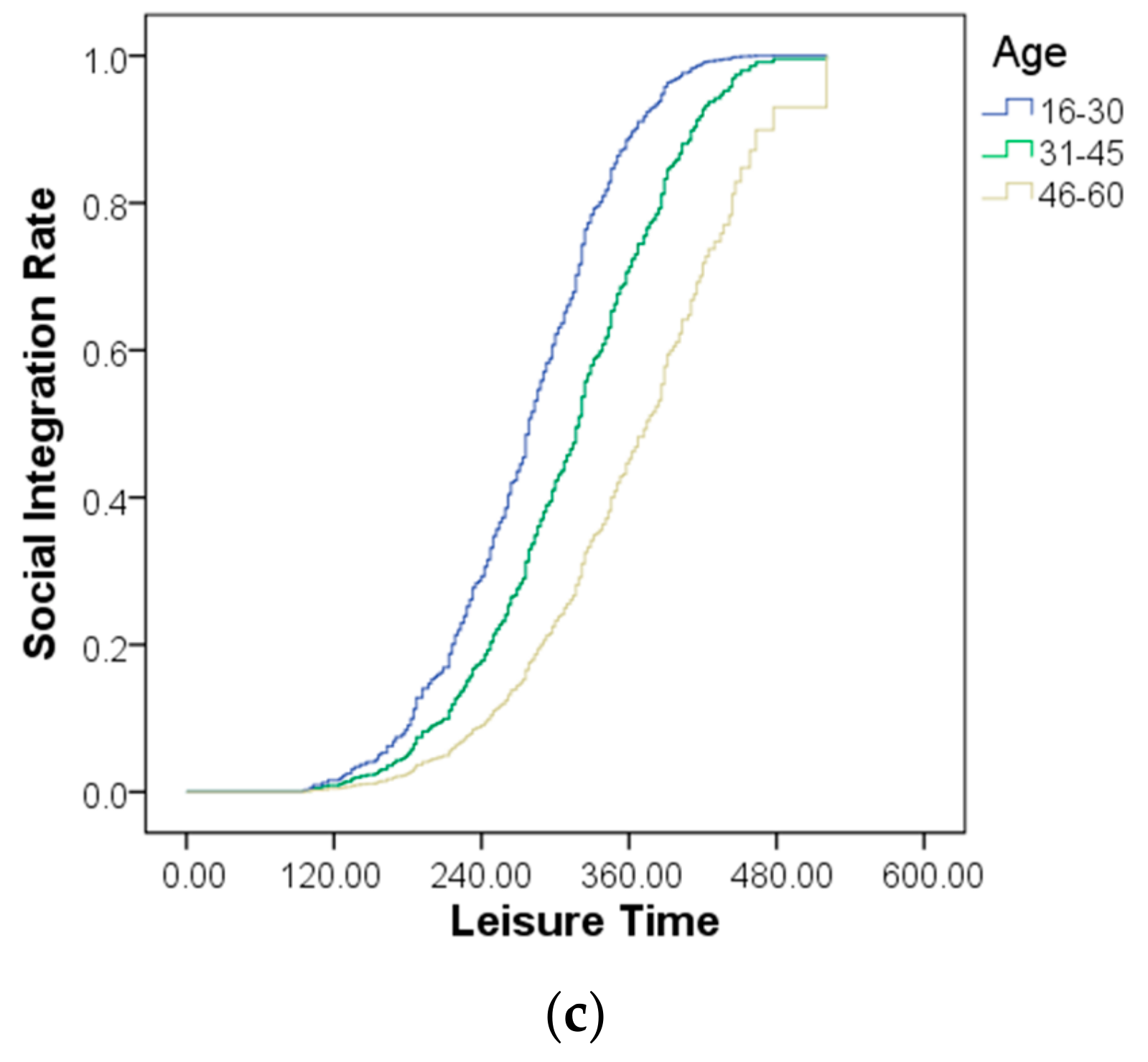
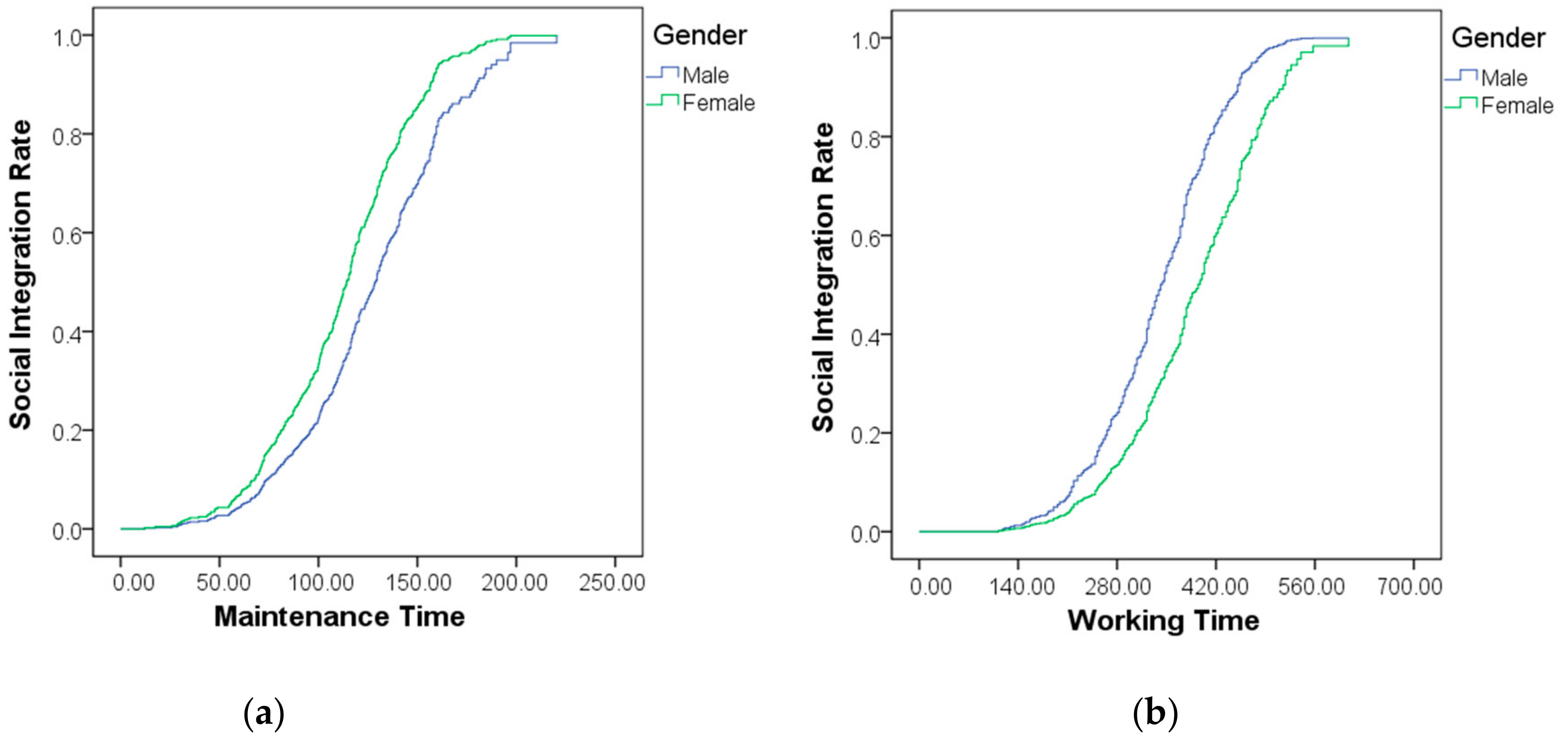
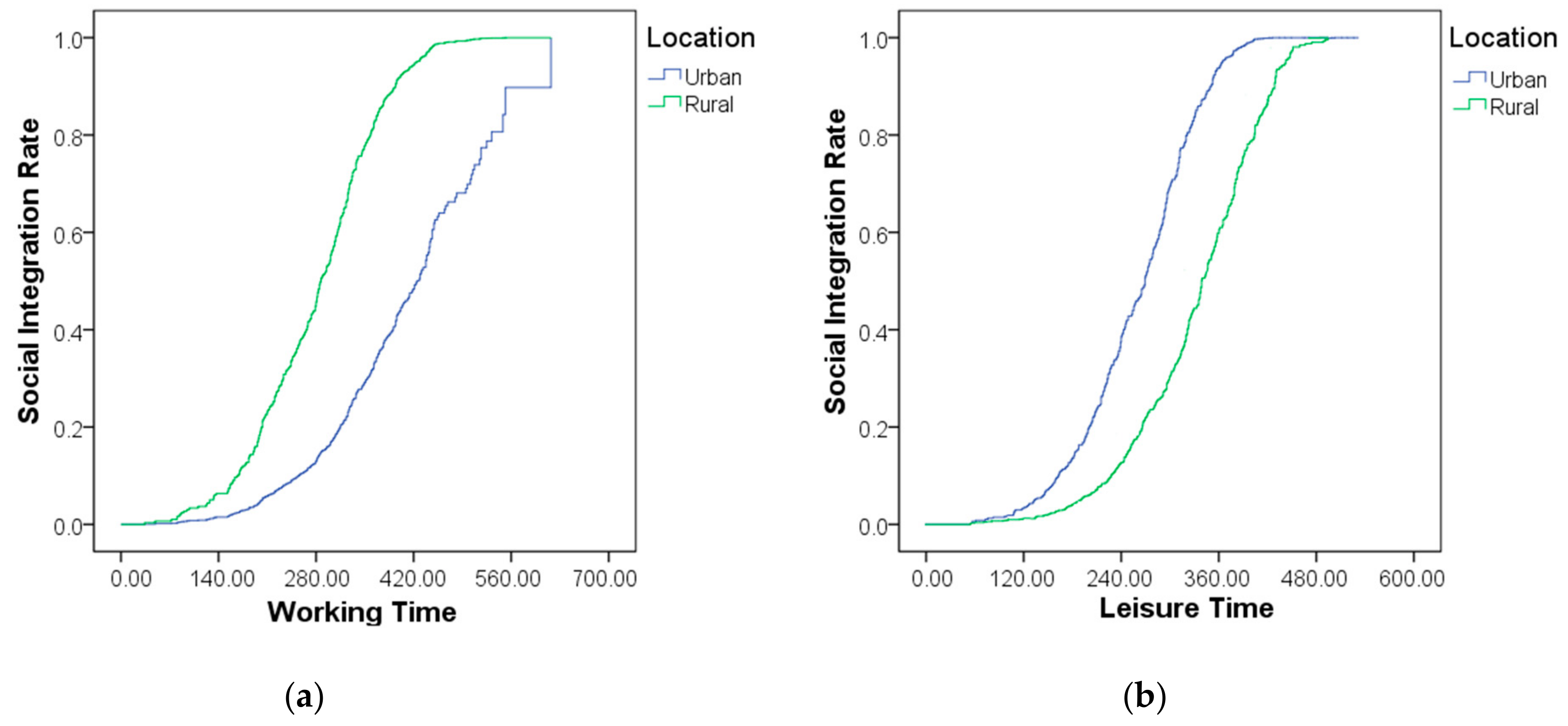
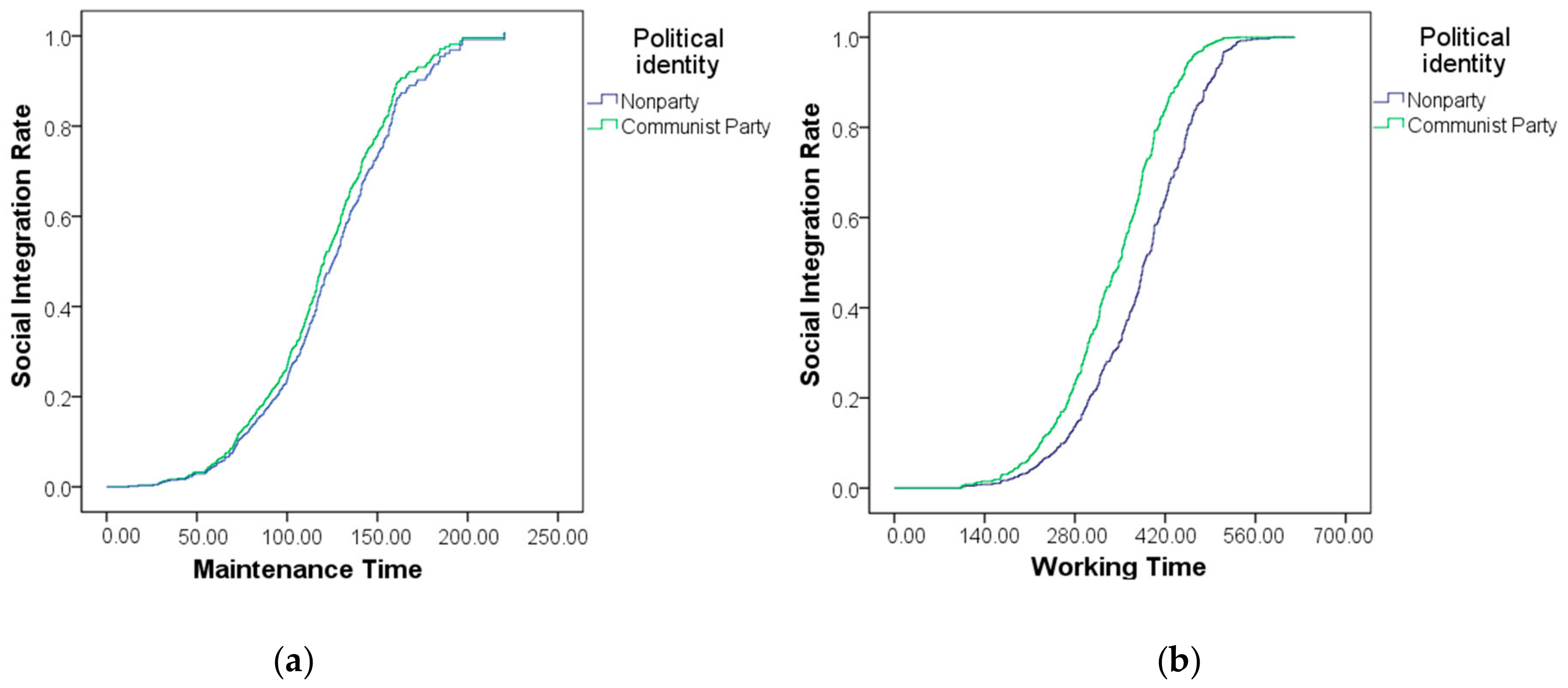
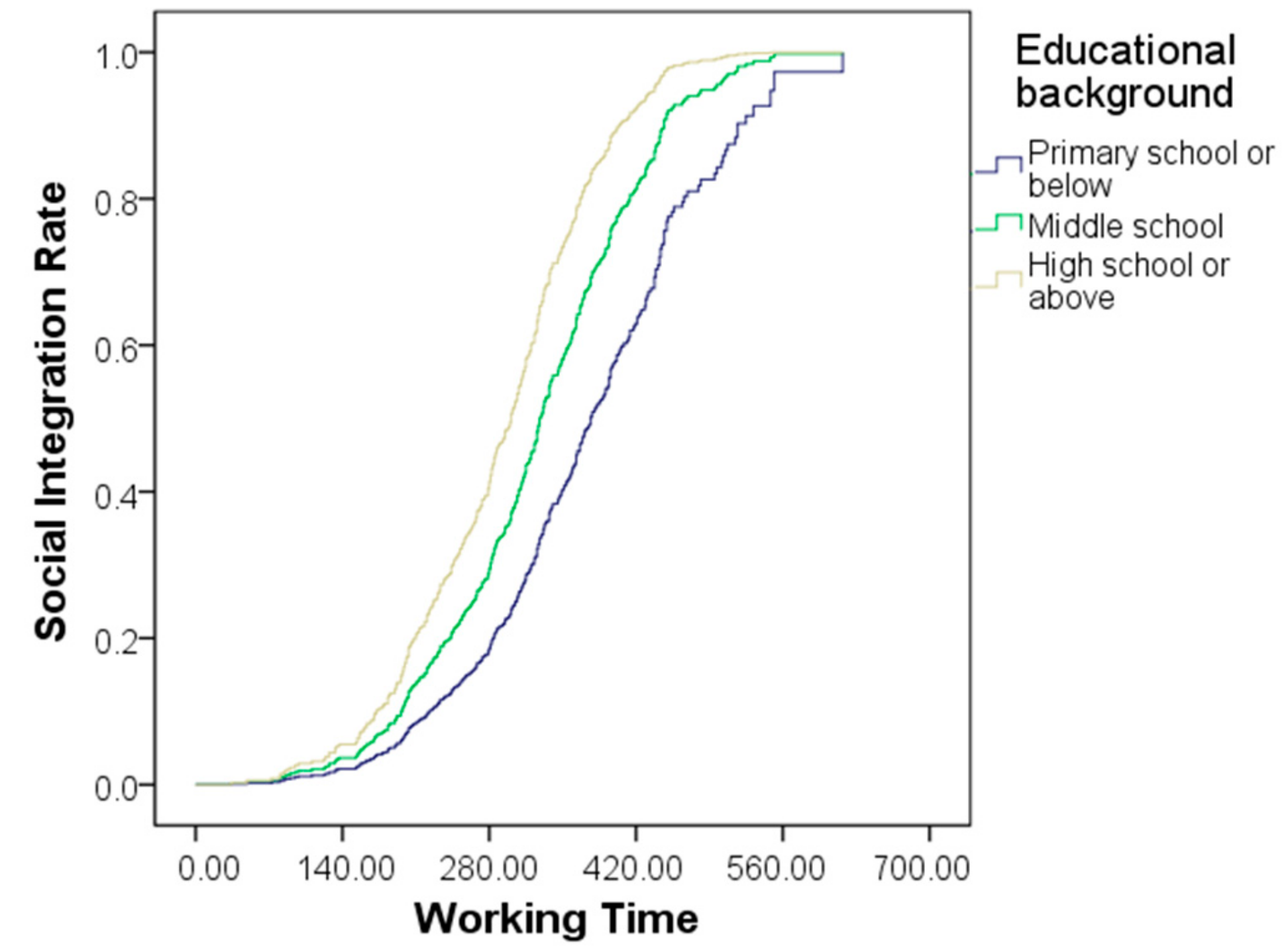
| Variable | Type | Values | Mean Value | Standard Deviation |
|---|---|---|---|---|
| Covariate | ||||
| Age | Nominal | 1 = 16–30 years old 2 = 31–45 years old 3 = 46–60 years old | 1.964 | 0.760 |
| Gender | Nominal | 1 = Male 2 = Female | 1.438 | 0.496 |
| Location | Nominal | 1 = Urban 2 = Rural | 1.546 | 0.498 |
| Political identity | Nominal | 1 = Communist Party 0 = Nonparty | 0.200 | 0.401 |
| Educational background | Nominal | 1 = Primary school or below 2 = Middle school 3 = High school or above | 2.160 | 0.682 |
| Independent variable | ||||
| Maintenance time | Scale | Actual (minutes) | 120.247 | 31.517 |
| Working time | Scale | Actual (minutes) | 349.962 | 105.527 |
| Leisure time | Scale | Actual (minutes) | 263.613 | 85.524 |
| Categories | Concepts | Connotation of Concepts |
|---|---|---|
| Political factors | Political participation | Limited political participation can lead migrants to resist the government and society [43]. |
| Employment discrimination | The loss of labor rights can cause dissatisfaction of migrants [44]. | |
| Social obligation | Migrants with limited understanding of social obligation may suffer from exclusion and inferiority. | |
| Compensation benefits | The compensation for land expropriation and relocation of migrants affects their perception of fairness and trust in the government. | |
| Economic factors | Household income | The limited income affects the living standards of migrants, which leads to anxiety and imbalance. [14] |
| Revenue sources | Unstable income causes migrants to panic about future life [45]. | |
| Consumption change | Changes in consumption concepts, patterns and structures lead to economic pressures on migrants. | |
| Household savings | The fear of emergencies arises from the fact that migrants have less household savings [14]. | |
| Cultural factors | Spiritual and cultural life | The spiritual and cultural needs affect the life satisfaction of migrants [46]. |
| Customs change | Migrants’ inheritance of customs influences their psychological identity of life in the resettlement place [47]. | |
| Local behavior standard | Migrants’ maladjustment to local behavior will affect their identity [16]. | |
| Life factors | Social interaction | The homogenization of social interaction of migrants affects their psychological satisfaction needs and sense of belonging [48]. |
| Living environment | The living environment of resettlement area affects the living comfort of migrants [49]. | |
| Activity participation | The limited participation in activities leads to the sense of closure and disappointment [48]. | |
| Security factors | Social security | The limited level of social security has caused migrants to feel greater pressure on the sustainable development of livelihoods. |
| Skill training | The methods and effects of skills training affect the enthusiasm of migrants to integrate into society and accept identity. |
| Time Dimension | |||
|---|---|---|---|
| Model 1 (Maintaining Time) Exp(B) | Model 2 (Working Time) Exp(B) | Model 3 (Leisure Time) Exp(B) | |
| 31–45 years old | 1.168 * | 1.231 *** | 0.809 ** |
| (Ref. category = 16–30 years old) | (2.106) | (3.753) | (2.619) |
| 46–60 years old | 0.514 ** | 0.406 *** | 0.435 *** |
| (Ref. category = 16–30 years old) | (2.785) | (3.613) | (4.372) |
| Gender | 1.996 ** | 0.443 ** | 0.517 |
| (Ref. category = male) | (2.958) | (2.398) | (1.159) |
| Location | 0.935 | 2.323 * | 0.287 ** |
| (Ref. category = Urban) | (1.404) | (1.958) | (2.546) |
| Political identity | 1.094 *** | 1.729 ** | 1.546 |
| (Ref. category = Communist Party) | (3.757) | (2.742) | (1.243) |
| Middle school | 0.967 | 1.301 ** | 0.740 |
| (Ref. category = Primary school or below) | (0.926) | (2.659) | (1.215) |
| High school or above | 1.488 | 1.512 ** | 0.764 |
| (Ref. category = Primary school or below) | (1.653) | (3.020) | (1.715) |
| Chi-square | 59.932 | 204.07 | 88.206 |
| df | 7 | 7 | 7 |
| Sig | 0.000 | 0.000 | 0.000 |
© 2019 by the authors. Licensee MDPI, Basel, Switzerland. This article is an open access article distributed under the terms and conditions of the Creative Commons Attribution (CC BY) license (http://creativecommons.org/licenses/by/4.0/).
Share and Cite
Shangguan, Z.; Wang, M.Y.; Huang, J.; Shi, G.; Song, L.; Sun, Z. Study on Social Integration Identification and Characteristics of Migrants from “Yangtze River to Huaihe River” Project: A Time-Driven Perspective. Sustainability 2020, 12, 211. https://doi.org/10.3390/su12010211
Shangguan Z, Wang MY, Huang J, Shi G, Song L, Sun Z. Study on Social Integration Identification and Characteristics of Migrants from “Yangtze River to Huaihe River” Project: A Time-Driven Perspective. Sustainability. 2020; 12(1):211. https://doi.org/10.3390/su12010211
Chicago/Turabian StyleShangguan, Ziheng, Mark Yaolin Wang, Jianyuan Huang, Guoqing Shi, Liangliang Song, and Zhonggen Sun. 2020. "Study on Social Integration Identification and Characteristics of Migrants from “Yangtze River to Huaihe River” Project: A Time-Driven Perspective" Sustainability 12, no. 1: 211. https://doi.org/10.3390/su12010211
APA StyleShangguan, Z., Wang, M. Y., Huang, J., Shi, G., Song, L., & Sun, Z. (2020). Study on Social Integration Identification and Characteristics of Migrants from “Yangtze River to Huaihe River” Project: A Time-Driven Perspective. Sustainability, 12(1), 211. https://doi.org/10.3390/su12010211







